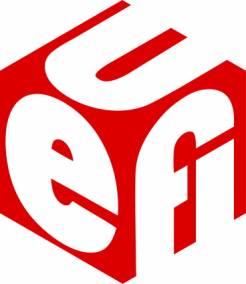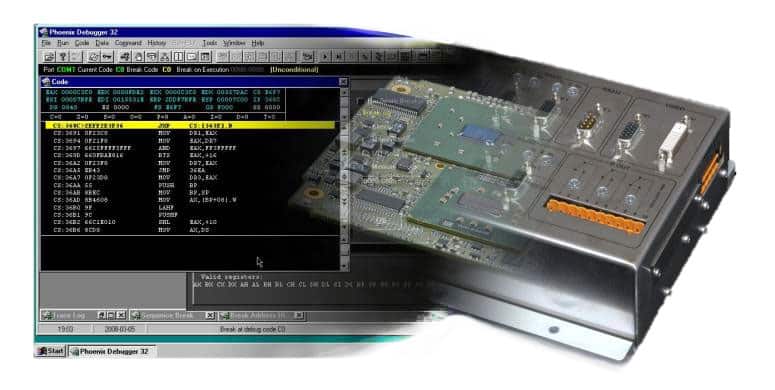Embedded BIOS vs UEFI

The Basic Input Output System, BIOS is a separation layer between the operating system and the hardware in an X86-processor based computer. BIOS and UEFI has co-existed since 2005, with BIOS being around for a couple of decades. And UEFI is a specification of firmware to replace BIOS.
UEFI firmware is now beginning to take over completely at the expense of BIOS. At least in new processor platforms, for X86 processors anyhow and definitely in the years to come. Let’s take a closer look at the driving forces behind the shift. Let’s also take a look at the consequences to you as an embedded PC user.
• Legacy BIOS initially runs in 16-bit operating mode even on today’s 32-bit and 64-bit processor platforms.

Firmware and drivers are part of Hectronic’s embedded solution offer to our customers. The C-based UEFI firmware will take over from legacy BIOS written in assembly language at Hectronic going forward.
|
According to Gerard Duynisveld, President of Eltan, workarounds and adaptations have solved problems in the past. This could in a similar way address the issues in BIOS today. Eltan is a distributor of Phoenix products and Hectronics partner within legacy BIO and UEFI firmware. Duynisveld believes that we’re getting closer to the point when the extra work from legacy support is too much to handle. One of the driving forces behind the shift from BIOS towards UEFI is to liberate firmware development from legacy requirements. |
|
|
|
|
Why UEFI is replacing legacy BIOS |
|
|
The UEFI specification has been around a couple of years now. Intel released the first version of the Extensible Firmware Interface, EFI specification in 1998. The Unified Extensible Firmware Interface, UEFI was founded in 2005. Companies like for instance AMD, Intel, Phoenix and Microsoft is behind the community effort of UEFI. The first version of the UEFI used the EFI version 1.10, which was adjusted and improve the UEFI specification. In 2007 the first widely accepted version of UEFI was released, The UEFI specification was 2.1. Unlike EFI, which is owned by Intel, UEFI is independently manufactured. UEFI is a processor independent standard on how to write firmware for computer platforms. The X86-architecture is in focus but ARM processors are in no way excluded. It can be used in a variety of systems because UEFI allows device manufacturers to write generic device drivers. |
|
|
|
|
UEFI vs BIOS – Standardizing the input to BIOS vendors |
|
|
BIOS firmware has been developed by a number of large vendors (AMI, Phoenix, Insyde) over the years. Manufacturers of devices such as processors, chipsets and components have been supplying the source code. That source code is needed to develop support for the respective devices in BIOS. The format and structure of the source code haven’t been standardized. Device manufacturers have had to supply the code in more than one format. The BIOS vendors have all required the source code in their own unique shape. On the other hand, UEFI standardizes how drivers initialize the various hardware components. Thereby only one version of these drivers is needed. One format of the source code is delivered to the firmware vendors to be included in their respective UEFI firmware. In this way UEFI simplifies the launch of components on the market. The support needed to integrate the components in computer systems are developed more rapidly with support from the UEFI standard. Yet another advantage is that the framework offered by UEFI. And there’s also the fact that the C programming language is used makes it easier to reuse firmware source code. Support for new versions of processors and components in firmware are introduced rapidly. This is because the existing code easily is adapted and reused. |
|
|
|
|
UEFI vs BIOS – Compatibility Support Modules bridge the gap |
|
|
As described before, BIOS firmware is a separation layer between hardware and operating system and consequently there are dependencies between BIOS and operating system. Many existing operating systems depend on legacy BIOS to work. Hectronic has developed legacy BIOS since the founding of the company and UEFI firmware since a couple of years. Usually we adapt firmware (BIOS or UEFI) from one of the third party suppliers to support the hardware we have developed. Adaptations are also one of the strategies to offer added value to our customers in the form of for instance saving power in a design or simplifying generation shift. |
|
|
|
|
UEFI vs BIOS – Greater access to functionality in pre-boot environment |
|
|
Custom development of UEFI firmware is part of the custom design offer to our customers in the same way that BIOS adaptations has been for many years. New possibilities to run applications prior to booting and handing over to the operating system, are allowed by UEFI. BIOS has offered that possibility but with limitations. The UEFI pre-boot environment grants access to a full-blown network stack, each and every device in the system, the complete memory space and high resolution graphics. The pre-boot environment may well be used for running diagnostic tools, troubleshooting utilities and programs to upgrade and repair the system, or to download software to the products and perform configuration during production. To sum up, the shift from BIOS to UEFI is a continuous and quite slow process. It’s clear that the future belongs to UEFI. The short-term consequences to users of embedded computers are not that drastic. The shift may not even be noticeable. In the long run there is room for new and useful applications and tools drawing advantage from the full-fledged pre-boot environment in UEFI. To Hectronic the deep technical control over UEFI firmware comes as natural as it has for legacy BIOS. More questions about UEFI vs BIOS? Contact Hectronic! |